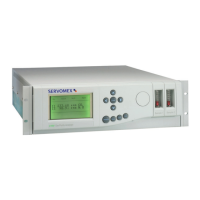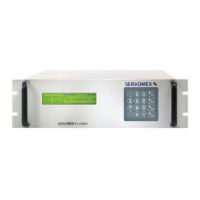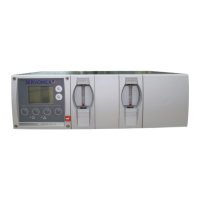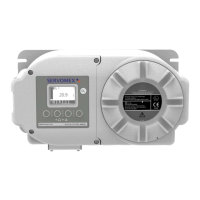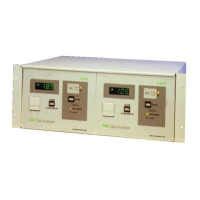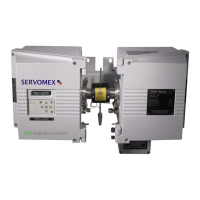1.4
1.4 Transducer site numbering system
The four internal transducers are assigned site locations represented as I1, I2, I3 and I4 on the
display.
In the case of the 4100 and the 4200 analysers, each transducer is served by a discrete sample
inlet and outlet connection on the rear panel.
In the case of the 4900 analyser, either one or two sample streams may be specified -
consequently only inlets/outlets numbered 1 and 2 will be used.
1.5 Output numbering system
Identification numbers appear on the rear label to identify the terminals where each output
appears and on the display when the outputs are being configured. These have a two digit
identification number of the following format : Card number. Output No.
e.g.. the outputs fitted as standard on the SIB pcb in card position 1 are:
1.1 Analogue output
1.2 Analogue output
1.3 Relay
1.4 Relay
1.5 Relay
1.6 Transducer full scale deflection
The transducer full scale deflection (FSD) is the maximum concentration level that may be
measured and displayed with the precision and accuracy specified for that transducer. This
may also be termed the measurement range for the transducer. Concentration levels that
exceed 120% of the FSD are considered as over range and are indicated by the word 'OVER'
on the analyser display.
There are two set up parameters on the analyser that are expressed in terms of the FSD:
• Calibration tolerances for the transducers.
• Alarm hysteresis.
When defining minimum output ranges, the relevant transducer noise specification should be
considered; refer to Section 7. (Table 1.1 lists all available transducer types and FSD values).
